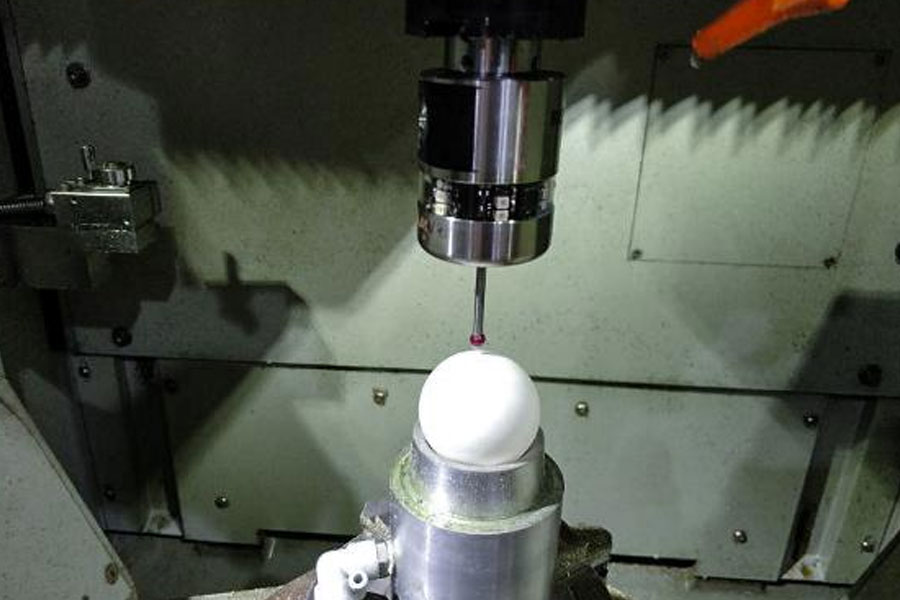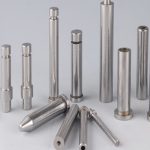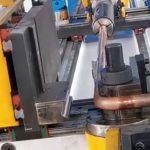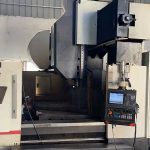After machining, the workpiece must be inspected accordingly. In the inspection, in addition to knowing the inspection standards for machining, we should also know what are the commonly used inspections for machining?

1. Tooth gauge
The tooth gauge is used to experience the quality of the thread. It is made according to the national standard. There are external and internal threads. The external thread is understood as a screw to test the standard of the nut, and the internal thread can be interpreted as the standard for the nut to test the screw.
2. Needle gauge
Needle gauges are used to inspect the inner hole standards. Generally there are two, one is a pass gauge and one is a stop gauge, just like a metal rod. The pass gauge must be able to fit into the hole, but the stop gauge must not go in. Any of the two An error indicates that the product size is unqualified
3. Vernier caliper
Vernier caliper is an inspection tool for measuring length, inner and outer diameter, and depth. The vernier caliper is composed of a main ruler and a sliding vernier attached to the main ruler. The main ruler is generally in millimeters, and there are 10, 20 or 50 divisions on the vernier. According to the different divisions, the vernier caliper can be divided into tenth degree vernier caliper, 20th degree vernier caliper, 50th degree vernier caliper, etc. The vernier is 9mm with 10 scales, 19mm with 20 scales, and 49mm with 50 scales. There are two movable measuring claws on the main ruler and the vernier of the vernier caliper, namely the inner measuring claw and the outer measuring claw. The inner measuring claw is usually used to measure the inner diameter, and the outer measuring claw is usually used to measure the length and outer diameter.
4. Micrometer
Micrometers and vernier calipers are used to inspect external inspection, inner diameter, and depth, but they are relatively single. You must purchase different micrometers for each specification, such as outer diameter micrometers, inner diameter micrometers, micrometers are more accurate than vernier calipers, and can be accurate to 0.01 mm
5. Altimeter
The altimeter is used to measure the depth dimension of the product, such as the size from one end face to the other. The dimension measured by the altimeter is more accurate than vernier calipers and can be accurate to 0.001mm
The above 5 are commonly used inspection tools in machining. These inspection tools must be calibrated before use to ensure the accuracy of machining workpieces.
Link to this article:The Commonly Used Inspection Tools List For Cnc Machining
Reprint Statement: If there are no special instructions, all articles on this site are original. Please indicate the source for reprinting:https://www.cncmachiningptj.com/
 Sheet metal, beryllium, carbon steel, magnesium, 3D printing, precision CNC machining services for heavy equipment, construction, agriculture and hydraulic industries. Suitable for plastics and rare alloys machining. It can turn parts up to 15.7 inches in diameter. Processes include swiss machining,broaching, turning, milling, boring and threading. It also provides metal polishing, painting, surface grinding and shaft straightening services. The production range(include Aluminum die casting and zinc die casting) is up to 50,000 pieces. Suitable for screw, coupling, bearing, pump, gearbox housing, drum dryer and rotary feed valve applications.PTJ will strategize with you to provide the most cost-effective services to help you reach your target,Welcome to Contact us ( [email protected] ) directly for your new project.
Sheet metal, beryllium, carbon steel, magnesium, 3D printing, precision CNC machining services for heavy equipment, construction, agriculture and hydraulic industries. Suitable for plastics and rare alloys machining. It can turn parts up to 15.7 inches in diameter. Processes include swiss machining,broaching, turning, milling, boring and threading. It also provides metal polishing, painting, surface grinding and shaft straightening services. The production range(include Aluminum die casting and zinc die casting) is up to 50,000 pieces. Suitable for screw, coupling, bearing, pump, gearbox housing, drum dryer and rotary feed valve applications.PTJ will strategize with you to provide the most cost-effective services to help you reach your target,Welcome to Contact us ( [email protected] ) directly for your new project.
Link to this article:The Commonly Used Inspection Tools List For Cnc Machining
Reprint Statement: If there are no special instructions, all articles on this site are original. Please indicate the source for reprinting:Alloy Wiki,thanks!^^







